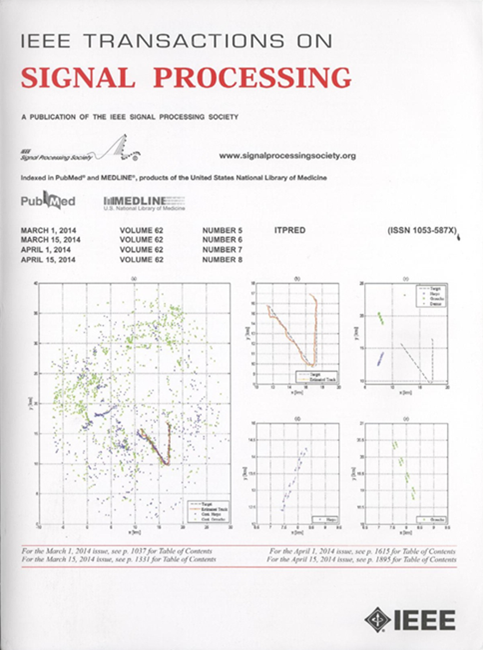单源定位作为特征值问题
IF 4.6
2区 工程技术
Q1 ENGINEERING, ELECTRICAL & ELECTRONIC
引用次数: 0
摘要
本文章由计算机程序翻译,如有差异,请以英文原文为准。
Single-Source Localization as an Eigenvalue Problem
This paper introduces a novel method for solving the single-source localization problem, specifically addressing the case of trilateration. We formulate the problem as a weighted least-squares problem in the squared distances and demonstrate how suitable weights are chosen to accommodate different noise distributions. By transforming this formulation into an eigenvalue problem, we leverage existing eigensolvers to achieve a fast, numerically stable, and easily implemented solver. Furthermore, our theoretical analysis establishes that the globally optimal solution corresponds to the largest real eigenvalue, drawing parallels to the existing literature on the trust-region subproblem. Unlike previous works, we give special treatment to degenerate cases, where multiple and possibly infinitely many solutions exist. We provide a geometric interpretation of the solution sets and design the proposed method to handle these cases gracefully. Finally, we validate against a range of state-of-the-art methods using synthetic and real data, demonstrating how the proposed method is among the fastest and most numerically stable.
求助全文
通过发布文献求助,成功后即可免费获取论文全文。
去求助
来源期刊

IEEE Transactions on Signal Processing
工程技术-工程:电子与电气
CiteScore
11.20
自引率
9.30%
发文量
310
审稿时长
3.0 months
期刊介绍:
The IEEE Transactions on Signal Processing covers novel theory, algorithms, performance analyses and applications of techniques for the processing, understanding, learning, retrieval, mining, and extraction of information from signals. The term “signal” includes, among others, audio, video, speech, image, communication, geophysical, sonar, radar, medical and musical signals. Examples of topics of interest include, but are not limited to, information processing and the theory and application of filtering, coding, transmitting, estimating, detecting, analyzing, recognizing, synthesizing, recording, and reproducing signals.
 求助内容:
求助内容: 应助结果提醒方式:
应助结果提醒方式:


